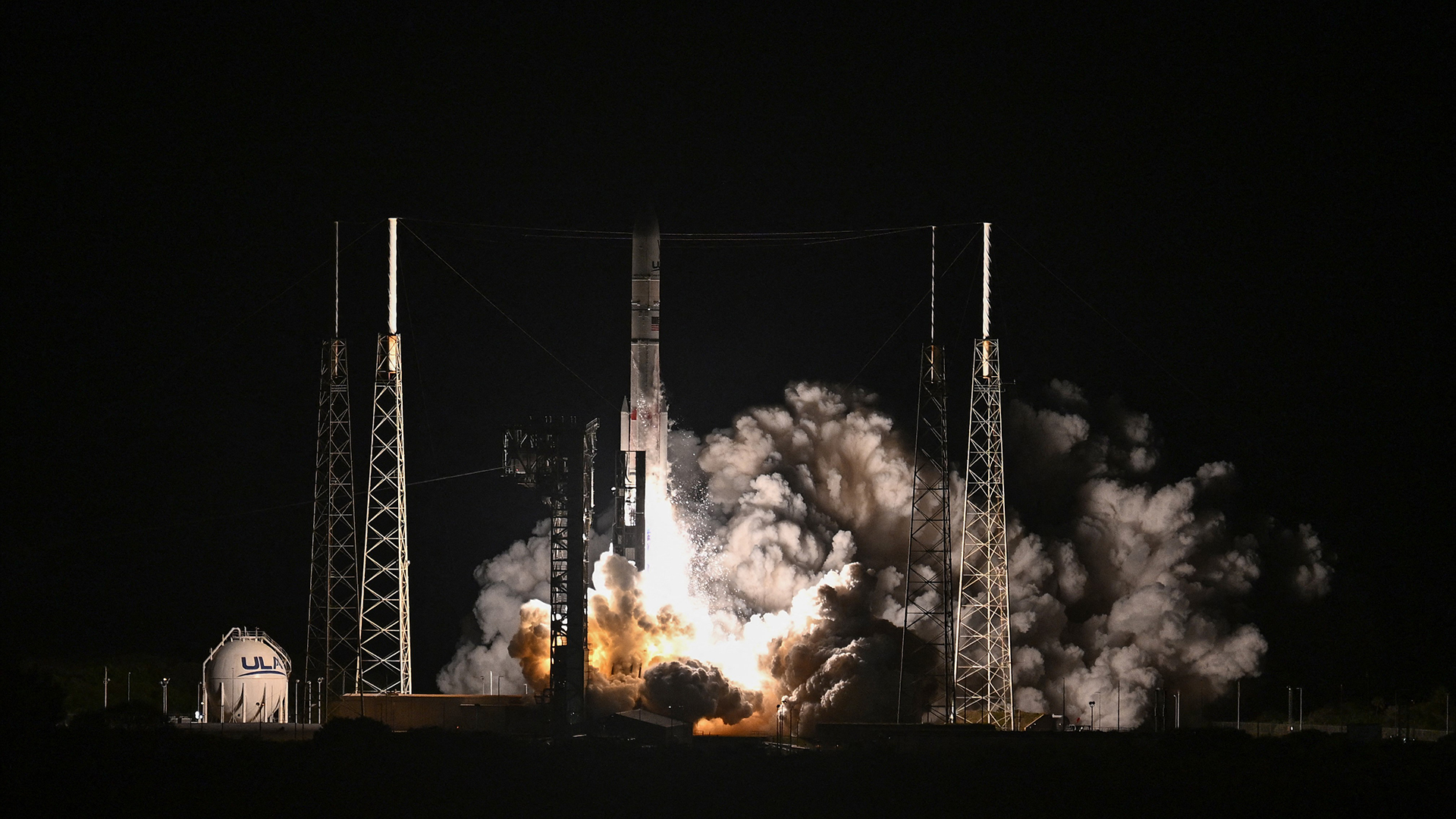
Engineers have identified the potential cause of a fuel leak on the Peregrine spacecraft that has left it, the first U.S. craft to attempt a soft landing on the moon in 50 years, with "no chance" of completing its mission.
The Peregrine spacecraft, owned by the private American company Astrobotic Technology, launched from Cape Canaveral, Florida, aboard a Vulcan rocket at 2:18 a.m. EST on Monday (Jan. 8).
The spacecraft's goal was to become the first private craft to perform a controlled landing on the moon, and was laden with instruments to measure the conditions on the lunar surface. Controversially, the spacecraft is also carrying human remains, including those of science fiction writer Arthur C. Clarke; Star Trek creator Gene Roddenberry; and Roddenberry wife's, Majel Barrett.
Related: Human remains blasted into space on Vulcan rocket will 'desecrate' the moon, Navajo Nation says
But six hours into its maiden flight, engineers reported a technical "anomaly" — a propellant leak that thwarted the mission. Now, the company has an explanation for what may have happened.
"Astrobotic's current hypothesis about the Peregrine spacecraft's propulsion anomaly is that a valve between the helium pressurant and the oxidizer failed to reseal after actuation during initialization," Astrobotic representatives wrote in a statement. "This led to a rush of high pressure helium that spiked the pressure in the oxidizer tank beyond its operating limit and subsequently ruptured the tank."
The leak means there is now "no chance of a soft landing on the Moon," Astrobotic representatives wrote in another statement. "However, we do still have enough propellant to continue to operate the vehicle as a spacecraft."
To land on the moon's surface, the 1.3-ton (1.2 metric tons) spacecraft would have needed to reorient its engine and fire controlled bursts of propellant to slow its descent. The lander was set to touch down on the moon on Feb. 23, deploying five NASA payloads (which cost the space agency $108 million for their delivery) and 15 other experiments on the moon.

The instruments — which include devices to measure radiation levels, surface ice and magnetic fields — were built to collect data on the moon's resources and potential risks to human habitation.
The Celestis Voyager Memorial Spaceflight — also known as the Enterprise Flight, which was also launched on the Vulcan rocket and was slated to journey to deep space — is carrying the ashes of more than 200 individuals, including Star Trek's Nichelle Nichols, James Doohan and DeForest Kelley, who played Nyota Uhura, Montgomery Scott and Dr. Leonard McCoy, respectively, on the classic sci-fi show.
Stored alongside these remains are samples of DNA from the U.S. presidents George Washington, Dwight Eisenhower and John F. Kennedy.
Yet the plan to put some human remains in the moon lander controversial, and Navajo Nation President Buu Nygren wrote an open letter to NASA and the U.S. Department of Transportation (DOT), arguing that landing human remains on the moon would be "tantamount to desecration of this sacred space."
Now that the moon-landing part of the mission has been abandoned, Astrobotic says it will try to keep Peregrine charged so that it can provide data for future missions. So far, the team says that around 35 hours of propellant remains to steer the craft. Once it has lost battery power, however, it will become a floating tomb.
Astrobotic is the first of three U.S. companies to attempt to send a lander to the moon this year. Along with the companies Intuitive Machines and Firefly Aerospace, it has entered a new private-public partnership with NASA that aims to send five more missions to our lunar companion in 2024.
In this partnership, NASA acts as a "customer," taking a back seat to the companies on spacecraft design and mission planning — an arrangement the space agency says will cut costs, boost development speed and encourage innovation. As such, NASA has said it can tolerate some mission failures.
Editor's note: Updated at 6:17 p.m. ET EST to clarify which human remains are on the moon lander and which are on the Enterprise Flight.







